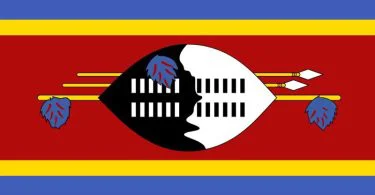PART ONE. SOUTH SUDAN AND THE CONSTITUTION 1. The Republic of South Sudan and its Territory 2. Sovereignty 3. Supremacy of the Constitution 4. Defence of the Constitution 5. Sources of Legislation 6. Language 7. National Symbols 8. Religion PART TWO. BILL OF RIGHTS 9. Nature of the Bill of Rights 10. Sanctity of Rights and Freedoms 11. Life and Human Dignity 12. Personal Liberty 13. Freedom from Slavery, Servitude and Forced Labour 14. Equality before the Law 15. Right to found a Family 16. Rights of Women 17. Rights of the Child 18. Freedom from Torture 19. Fair Trial 20. Right to Litigation 21. Restriction on Death Penalty 22. Privacy 23. Religious Rights 24. Freedom of Expression and Media 25. Freedom of Assembly and Association 26. Right to Participation and Voting 27. Freedom of Movement and Residence 28. Right to Own Property 29. Right to Education 30. Rights of Persons with Special Needs and the Elderly 31. Public Health Care 32. Right of Access to Information 33. Rights of Ethnic and Cultural Communities 34. Right to Housing PART THREE. FUNDAMENTAL OBJECTIVES AND GUIDING PRINCIPLES CHAPTER I. OBJECTIVES AND PRINCIPLES 35. Guiding Objectives and Principles 36. Political Objectives 37. Economic Objectives 38. Education, Science, Art and Culture 39. Family 40. Children, Youth and Sports 41. The Environment 42. Defence of the Republic of South Sudan 43. Foreign Policy 44. Saving CHAPTER II. CITIZENSHIP AND NATIONALITY 45. Citizenship and Rights 46. Duties of the Citizen CHAPTER III. THE DECENTRALIZED SYSTEM OF GOVERNANCE 47. Levels of Government 48. Devolution of Powers 49. Inter-Governmental Linkages PART FOUR. THE NATIONAL GOVERNMENT 50. Establishment of the National Government 51. Organs of the National Government 52. Powers and Competences of the National Government 53. Primary Responsibilities of the National Government PART FIVE. THE NATIONAL LEGISLATURE CHAPTER I. ESTABLISHMENT, COMPOSITION AND FUNCTIONS 54. Establishment and Composition of the National Legislature 55. Competences of the National Legislature 56. Composition of the National Legislative Assembly 57. Powers and Functions of the National Legislative Assembly 58. Composition of the Council of States 59. Competences of the Council of States 60. Rules of the National Legislature 61. Seat of the National Legislature 62. Eligibility for Membership 63. Loss of Membership of the National Legislature 64. By-elections 65. Oath of a Member of the National Legislature 66. Term of the National Legislature 67. Immunity of Members of the National Legislature 68. Sessions of the National Legislature 69. Officers of the National Legislature 70. Emoluments of Members of the National Legislature 71. Minority Leaders 72. Committees of the National Legislature 73. Regulations of the National Legislature 74. Quorum 75. Publicity of Sittings of the National Legislature 76. Passing Legislative Resolutions 77. Privileges of Members of the National Legislature 78. Address by the President 79. Address by the Vice President and Statements by Ministers and Governors 80. Questions Addressed to Ministers by Members of the National Legislature 81. Request of Statements 82. General Summons 83. Tabling of Bills 84. Procedures for Presentation and Consideration of Bills 85. Assent of the President 86. Provisional Orders 87. Bills Pertaining to Allocation of Resources and Revenues 88. General Budget Proposal, Estimates and Related Bills 89. Private Member Financial Bill 90. Provisional and Supplementary Financial Measures 91. Final Accounts 92. Delegation of Powers of Subsidiary Legislation 93. Validity of the Proceedings of the National Legislature CHAPTER II. INTERIM PROVISIONS 94 PART SIX. THE NATIONAL EXECUTIVE CHAPTER I. ESTABLISHMENT, COMPOSITION AND POWERS 95. Establishment and Composition of the Executive 96. Powers and Competences of the Executive CHAPTER II. THE PRESIDENT OF THE REPUBLIC 97. The President 98. Eligibility for the Office of the President 99. Oath of the President 100. Tenure of the Office of the President 101. Functions of the President 102. Vacancy of Office of the President 103. Immunity and Impeachment of the President 104. Appointment and Removal of the Vice President 105. Functions of the Vice President 106. Vacancy of Office of the Vice President 107. Presidential Advisors CHAPTER III. THE NATIONAL COUNCIL OF MINISTERS 108. Establishment and Composition of the Council of Ministers 109. Competences of the Council of Ministers 110. Functions of the Council of Ministers 111. Confidentiality of Deliberations of the Council of Ministers 112. Appointment and Removal of Ministers 113. Oath of a Minister 114. Functions of a Minister 115. Collective and Individual Responsibility of Ministers 116. Contesting Ministerial Acts 117. Appointment, Removal and Functions of Deputy Ministers 118. Vote of No Confidence Against a Minister 119. Vacancy of the Office of a Minister or Deputy Minister 120. Declaration of Wealth and Prohibition of Private Business 121. Emoluments and Remuneration PART SEVEN. THE JUDICIARY 122. The Judicial Power 123. Structure of the Judiciary 124. Independence of the Judiciary 125. Composition of the Supreme Court 126. Competences of the Supreme Court 127. Administrative Functions of the Chief Justice 128. Administrative Functions of the Deputy Chief Justice 129. Courts of Appeal 130. High Courts 131. County and Other Courts 132. The National Judicial Service Commission 133. Appointment of Justices and Judges 134. Discipline of Justices and Judges PART EIGHT. PUBLIC ATTORNEYS AND ADVOCACY 135. Public Attorneys and Legal Advisors 136. Advocacy 137. Law Review Commission PART NINE. THE CIVIL SERVICE, INDEPENDENT INSTITUTIONS AND COMMISSIONS CHAPTER I. THE CIVIL SERVICE 138. Civil Service 139. Basic Values and Guidelines for Civil Service 140. The Civil Service Commission 141. Employees Justice Chamber CHAPTER II. INDEPENDENT INSTITUTIONS AND COMMISSIONS 142 CHAPTER III. ANTI-CORRUPTION COMMISSION 143. Establishment of the Anti-Corruption Commission 144. Functions of the Commission CHAPTER IV. HUMAN RIGHTS COMMISSION 145. Establishment of the Human Rights Commission 146. Functions of the Commission CHAPTER V. PUBLIC GRIEVANCES CHAMBER 147 CHAPTER VI. RELIEF AND REHABILITATION COMMISSION 148 CHAPTER VII. DEMOBILIZATION, DISARMAMENT AND RE-INTEGRATION COMMISSION 149 CHAPTER VIII. HIV/AIDS COMMISSION 150 PART TEN. ARMED FORCES, LAW ENFORCEMENT AGENCIES AND SECURITY CHAPTER I. ARMED FORCES 151. Composition, Status, Mission and Duties 152. Code of Conduct for the Armed Forces 153. Command and Control 154. Command Council CHAPTER II. LAW ENFORCEMENT AGENCIES 155. The Police Service 156. The Prisons Service 157. The Wildlife Service 158. The Fire Brigade Service CHAPTER III. NATIONAL SECURITY 159. Guiding Principles of National Security 160. National Security Service 161. National Security Council and Committees PART ELEVEN. THE STATES, LOCAL GOVERNMENT AND TRADITIONAL AUTHORITY CHAPTER I. STATES OF SOUTH SUDAN 162. General Provisions 163. State Organs 164. State Legislative Assembly 165. State Executive CHAPTER II. LOCAL GOVERNMENT 166. Local Government 167. Traditional Authority 168. Role of Traditional Authority PART TWELVE. FINANCE AND ECONOMIC MATTERS CHAPTER I. GUIDING PRINCIPLES FOR DEVELOPMENT AND EQUITABLE SHARING OF NATIONAL WEALTH 169 CHAPTER II. LAND OWNERSHIP, TENURE AND NATURAL RESOURCES 170. Land Ownership 171. Land Tenure 172. Land Commission CHAPTER III. PETROLEUM AND GAS DEVELOPMENT AND MANAGEMENT 173. Guiding Principles for Petroleum and Gas Development and Management 174. National Petroleum and Gas Commission 175. Ministry in Charge of Petroleum and Gas 176. National Petroleum and Gas Corporation CHAPTER IV. SOURCES OF REVENUE 177. Sources of Revenue for the National Government 178. National Oil Revenue 179. Sources of Revenue of the States CHAPTER V. FISCAL AND FINANCIAL INSTITUTIONS 180. National Revenue Fund 181. Fiscal and Financial Allocation and Monitoring Commission CHAPTER VI. BANKING IN SOUTH SUDAN 182. Establishment of the Bank of South Sudan 183. Circulating Currencies in South Sudan 184. Borrowing CHAPTER VII. ACCOUNTING STANDARDS 185. Accounting Procedures, Standards and Fiscal Accountability 186. National Audit Chamber CHAPTER VIII. INTERSTATE TRADE, COMMERCE AND LIABILITIES AND ASSETS 187. Interstate Trade and Commerce 188. Government Liabilities and Assets PART THIRTEEN. STATE OF EMERGENCY AND DECLARATION OF WAR 189. Declaration of a State of Emergency 190. Powers of the President in a State of Emergency 191. Duration of a State of Emergency 192. Declaration of War PART FOURTEEN. CENSUS, REFERENDA AND ELECTIONS CHAPTER I. CENSUS AND STATISTICS 193. The National Bureau of Statistics 194. Population Census CHAPTER II. REFERENDA 195 CHAPTER III. ELECTIONS 196. Running for Elections 197. The National Elections Commission PART FIFTEEN. MISCELLANEOUS PROVISIONS 198. Coming into Force of this Constitution 199. Amendment of this Constitution 200. Continuity of Laws and Institutions PART SIXTEEN. TRANSITIONAL PROVISIONS AND THE PERMANENT CONSTITUTION PROCESS CHAPTER I. TRANSITIONAL PROVISIONS 201 CHAPTER II. PERMANENT CONSTITUTION PROCESS 202. National Constitutional Review Commission 203. National Constitutional Conference Schedule (D). Residual Powers Schedule (E). Resolution of Conflicts in Respect of Concurrent Powers
Residual powers shall be dealt with according to their nature. If the power pertains to a national matter, requires a national standard, or is a matter which cannot be regulated by a single state, it shall be exercised by the National Government. If the power pertains to a matter that is usually exercised by the state or local government, it shall be exercised by the state or local government.
If there is a contradiction between the provisions of National law and a state law on the matters that are concurrent, the National law shall prevail to the extent of the contradiction.
Get more fascinating contents like this on Facebook .






